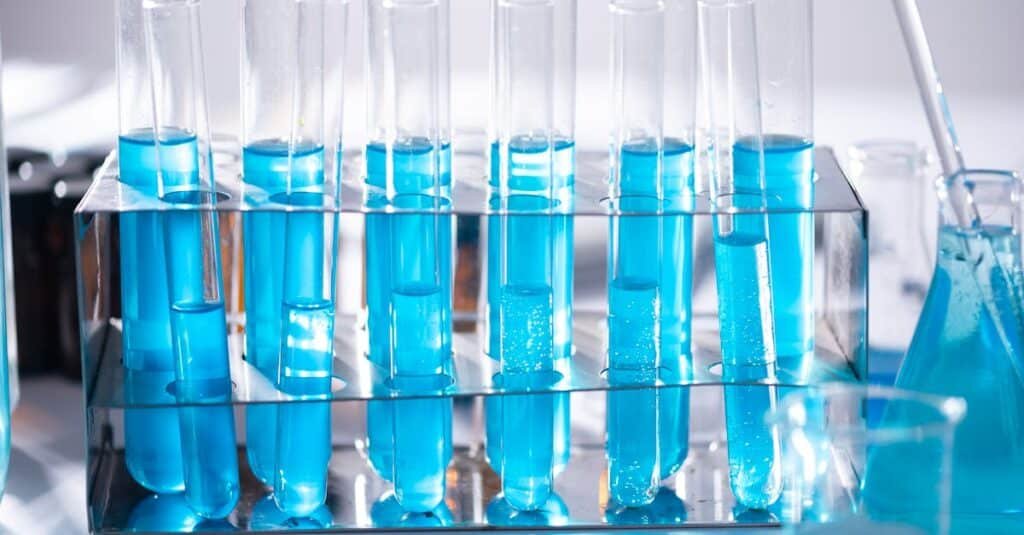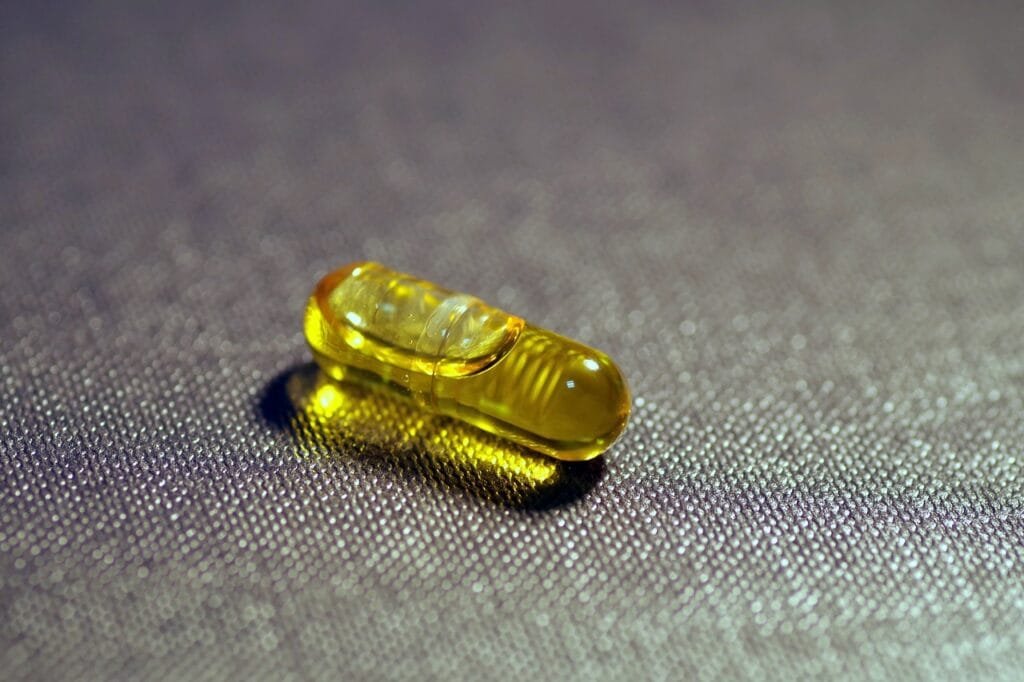Akkermansia muciniphila, a new generation probiotic for metabolic disease
The word probiotic was virtually unknown a few years ago, but it is now among the most commonly consumed supplements worldwide. For many years, these active bacteria were used to treat very specific gastrointestinal conditions, such as diarrhea induced by antibiotics. Now, due to their extensive list of benefits and safe profile, they are available as an over-the-counter supplement for anyone.
This trend has led to extensive research on probiotics and their benefits, which has found how these bacteria can change our metabolism and improve several health parameters. Several advances in large-scale sequencing methods have allowed the investigation of whole microbial communities, which is why new probiotics, such as Akkermansia muciniphila, have emerged.
This probiotic is not particularly abundant in the gut microbiota. Compared to Lactobacilli, there are only a few microbial communities of Akkermansia muciniphila in the gut. However, such a limited proportion of probiotics has a remarkable effect on our metabolic system and gut environment.
In this article, we will explore the recent studies and evidence about Akkermansia muciniphila and how it influences health and wellness. If you find this probiotic listed as a supplement and wonder what it is about, you will learn its basic facts and most common applications.
What everyone should know about Akkermansia muciniphila
Akkermansia muciniphila is a gram-negative bacteria. It has an oval shape and doesn’t move. Like many other bacteria in the gut, this one is anaerobic, which means it grows better without oxygen. However, it is oxygen-tolerant, so it survives even in the presence of oxygen.
This probiotic bacteria is a member of the Verrucomicrobia phylum and the only subtype of Verrucomicrobia in the gut. The gut microbiota consists of around 1 to 3% Akkermansia muciniphila. Although we usually don’t have much of it, the colonization of this bacteria persists throughout our lifetime, and it is localized in the terminal portion of the large intestines (1, 2).
One of the most intriguing features of Akkermansia muciniphila is how its metabolic machinery degrades mucin and produces acetate and propionate. These metabolic byproducts and others contribute as biotherapeutic agents in the host and improve several health parameters (3).
Akkermansia muciniphila is considered beneficial for strengthening the gut microstructure, improving hormone secretion, reducing metabolic inflammation, and influencing various hormones, even some distant from the gut. As a probiotic, it is a safe option and commonly used to relieve the metabolic implications of overweight and obesity. It has been tested for up to three months in a moderate concentration of colony-forming units, which proves it has no adverse effects and is well tolerated (4).
Benefits and applications of Akkermansia muciniphila
Akkermansia muciniphila is a new-generation probiotic based on extensive research on individuals with metabolic disease. The main benefits of this strain are linked to improvements in health parameters in type 2 diabetes, overweight, and obesity. However, there are studies about its effects on neurological disorders, immune function, cancer, and much more.
In the following sections, we will explore the health benefits and refer to Akkermansia muciniphila as A. muciniphila, for shortphila strengthens gut barriers by stimulating new cell formation.
One would argue that supplementing with A. muciniphila might not be beneficial for gut wall integrity because the bacteria feed off mucin. This protein forms the mucous portion of the gut wall, which is essential to keep microbes away from the inner section of the wall and the tight junctions.
However, while using mucin as an energy source, A. muciniphila also stimulates the formation of goblet cells in the intestines. These cells produce even more mucin than that consumed by the bacteria. Thus, instead of degrading the mucous layer of the gastrointestinal wall, A. muciniphila promotes and strengthens its defensive mechanisms (5).
Additionally, A. muciniphila can also strengthen the epithelial tight junctions in the gut. These are proteins found between cells that mediate gut permeability. Leaky gut syndrome happens when these tight junctions do not function properly and let food antigens enter the inner layers of the epithelium and come into contact with immune cells, causing inflammatory problems. A. muciniphila has an outer membrane protein known as Amuc 1100, which improves epithelial junctions and strengthens its barrier function (6).
A. muciniphila modulates the release of appetite peptide hormones
The gut communicates closely with the brain via the gut-brain axis, which works through enteroendocrine cells releasing hormones that reach the brain and play a specific role. This is how the gut tells the brain it has had enough nutrients, promoting satiety. Different hormones can do this, including glucagon-like peptide-1 (GLP-1). A. muciniphila is known to stimulate L cells in the gut, promoting the secretion of GLP-1 and stimulating satiety (7).
That’s how A. muciniphila can be used in patients with overweight and obesity to suppress appetite, but GLP-1 has many other regulatory functions. For instance, it stimulates brown adipose tissue thermogenesis. This increases our energy expenditure and contributes to weight loss. It is also an important protein in patients with insulin problems, as it is known to facilitate insulin secretion from pancreatic beta cells (8, 9).
A. muciniphila reduces inflammatory problems associated with obesity
One problem obesity has that nobody mentions is inflammation. Overweight and obesity are linked to an increase in inflammatory markers, which triggers diseases such as ulcerative colitis, osteoarthritis, and type 2 diabetes. Inflammation can also affect our brain in the long term, causing a host of conditions derived from neurodegeneration. It all happens because the adipocyte stores fat and is also an active producer of inflammatory cytokines such as interleukin 6 and interleukin 1-beta.
In this context, A. muciniphila works by reducing the expression of these inflammatory cytokines in the visceral adipose tissue. Additionally, it increases the fraction of regulatory T cells, which counter the inflammatory effects of cytokines when they go overboard. This double action has an anti-inflammatory effect on the gut and distant organs, improving insulin resistance in obese patients. It also benefits patients with chronic inflammation and immune system problems, such as inflammatory bowel disease and rheumatoid arthritis (10).
A. muciniphila is linked to improvements in neurological disorders
The gut-brain axis we mentioned above has a decisive effect on different neurological outcomes. That’s how the gut microbiota, including A. muciniphila, can modulate symptoms of diseases such as refractory epilepsy, autism spectrum disorder, major depression, and Alzheimer’s disease.
As discussed before, A. muciniphila reduces inflammation and may benefit the brain tissue in the long term. However, it also acts in the short-term, with a therapeutic effect on depression, according to studies. There are different sources showing that a lower abundance of this bacteria in the gut is linked to a higher rate of depression, autism spectrum disorder, and other neurological conditions. In animal studies, administering A. muciniphila has shown protective effects from seizures and changes in the secretion of key neurotransmitters such as glutamate and GABA. However, in the field of neuropsychiatric disorders, the use of A. muciniphila remains controversial because there is not enough evidence to show its effectiveness as a therapeutic tool (11).
A. muciniphila may benefit patients with melanoma
This probiotic has also been studied in cancer research. According to different authors, it may provide an edge in cancer therapy, especially in melanoma. Studies show that patients with a better clinical outcome in this type of cancer are more likely to have a higher proportion of A. muciniphila in their guts.
The mechanism appears to be related to a protein known as PD-1. In cancer, PD-1 binds to PD-L1 and stops the immune response meant to kill defective cells. In the presence of A. muciniphila, PD-1 is blocked and cannot bind with PD-L1, allowing for a better immune response against some types of cancer (12).
Safety and uses of A. muciniphila
If you don’t hear as much of A. muciniphila as with Lactobacilli, it is because the probiotic has very specific uses and should be recommended with care. It is not the usual over-the-counter probiotic on the pharmacy shelf.
A. muciniphila is mainly beneficial for patients with diabetes, overweight, obesity, and problems with insulin sensitivity. Other benefits, such as anti-inflammatory effects, depend on the host’s basal state of health. For instance, this supplement may not be a good idea for people with ulcerative colitis because too much of this bacteria in the gut may alter the balance of mucin in the intestinal wall.
It is also important to note that A. muciniphila should not be used in patients infected with Salmonella. This bacteria can interact with A. muciniphila and thrive together, which is not a good idea. Using it as a probiotic to reconstitute our gut microbiota after extensive antibiotic use is also not recommended. In this case, we should choose other over-the-counter options.
Remember that A. muciniphila is only present in our gut to a very small degree compared to other microbes. Therefore, overcrowding the gut with this bacteria might alter the balance of the gut microbiota. Thus, if you are considering using A. muciniphila, it is best to talk to your doctor before deciding on the dose, the frequency of administration, and the duration of the treatment.

Conclusion and takeout
A. muciniphila is considered a new generation probiotic because it was recently discovered as a part of our gut microbiota and has many recent studies in animal models and their clinical applications. There are many reviews in the medical literature of this new probiotic, which aims to improve metabolic problems derived from obesity and overweight.
This probiotic is mainly used in patients with obesity and metabolic disease related to insulin and glucose tolerance. Studies have shown that it may promote insulin secretion and improve glucose tolerance in patients with low secretion levels. It also works on immune system cells, reducing the expression of cytokines and increasing the number of regulatory cells, which counters inflammation.
A. muciniphila is also linked to improvements in neuropsychiatric disorders. However, more research is needed to determine whether the effects are clinically relevant in human subjects. Since there are fewer of these bacteria in our guts, it is a good idea to use the supplement after talking to your doctor to ensure that you will benefit from it.
References:
- Derrien, M., Collado, M. C., Ben-Amor, K., Salminen, S., & de Vos, W. M. (2008). The Mucin degrader Akkermansia muciniphila is an abundant resident of the human intestinal tract. Applied and environmental microbiology, 74(5), 1646-1648.
- Collado, M. C., Derrien, M., Isolauri, E., de Vos, W. M., & Salminen, S. (2007). Intestinal integrity and Akkermansia muciniphila, a mucin-degrading member of the intestinal microbiota present in infants, adults, and the elderly. Applied and environmental microbiology, 73(23), 7767-7770.
- Derrien, M., Vaughan, E. E., Plugge, C. M., & de Vos, W. M. (2004). Akkermansia muciniphila gen. nov., sp. nov., a human intestinal mucin-degrading bacterium. International journal of systematic and evolutionary microbiology, 54(5), 1469-1476.
- Depommier, C., Everard, A., Druart, C., Plovier, H., Van Hul, M., Vieira-Silva, S., … & Cani, P. D. (2019). Supplementation with Akkermansia muciniphila in overweight and obese human volunteers: a proof-of-concept exploratory study. Nature medicine, 25(7), 1096-1103.
- Everard, A., Belzer, C., Geurts, L., Ouwerkerk, J. P., Druart, C., Bindels, L. B., … & Cani, P. D. (2013). Cross-talk between Akkermansia muciniphila and intestinal epithelium controls diet-induced obesity. Proceedings of the national academy of sciences, 110(22), 9066-9071.
- Plovier, H., Everard, A., Druart, C., Depommier, C., Van Hul, M., Geurts, L., … & Cani, P. D. (2017). A purified membrane protein from Akkermansia muciniphila or the pasteurized bacterium improves metabolism in obese and diabetic mice. Nature medicine, 23(1), 107-113.
- McMahon, L. R., & Wellman, P. J. (1998). PVN infusion of GLP-1-(7—36) amide suppresses feeding but does not induce aversion or alter locomotion in rats. American Journal of Physiology-Regulatory, Integrative and Comparative Physiology, 274(1), R23-R29.
- Shigeto, M., Ramracheya, R., Tarasov, A. I., Cha, C. Y., Chibalina, M. V., Hastoy, B., … & Rorsman, P. (2015). GLP-1 stimulates insulin secretion by PKC-dependent TRPM4 and TRPM5 activation. The Journal of clinical investigation, 125(12), 4714-4728.
- Beiroa, D., Imbernon, M., Gallego, R., Senra, A., Herranz, D., Villarroya, F., … & Nogueiras, R. (2014). GLP-1 agonism stimulates brown adipose tissue thermogenesis and browning through hypothalamic AMPK. Diabetes, 63(10), 3346-3358.
- Shin, N. R., Lee, J. C., Lee, H. Y., Kim, M. S., Whon, T. W., Lee, M. S., & Bae, J. W. (2014). An increase in the Akkermansia spp. population induced by metformin treatment improves glucose homeostasis in diet-induced obese mice. Gut, 63(5), 727-735.
- Lei, W., Cheng, Y., Gao, J., Liu, X., Shao, L., Kong, Q., … & Hu, W. (2023). Akkermansia muciniphila in neuropsychiatric disorders: friend or foe?. Frontiers in cellular and infection microbiology, 13, 1224155.
- Arthur, J. C., Perez-Chanona, E., Mühlbauer, M., Tomkovich, S., Uronis, J. M., Fan, T. J., … & Jobin, C. (2012). Intestinal inflammation targets cancer-inducing activity of the microbiota. science, 338(6103), 120-123.
For Other Articles on Probiotics Click Here.




